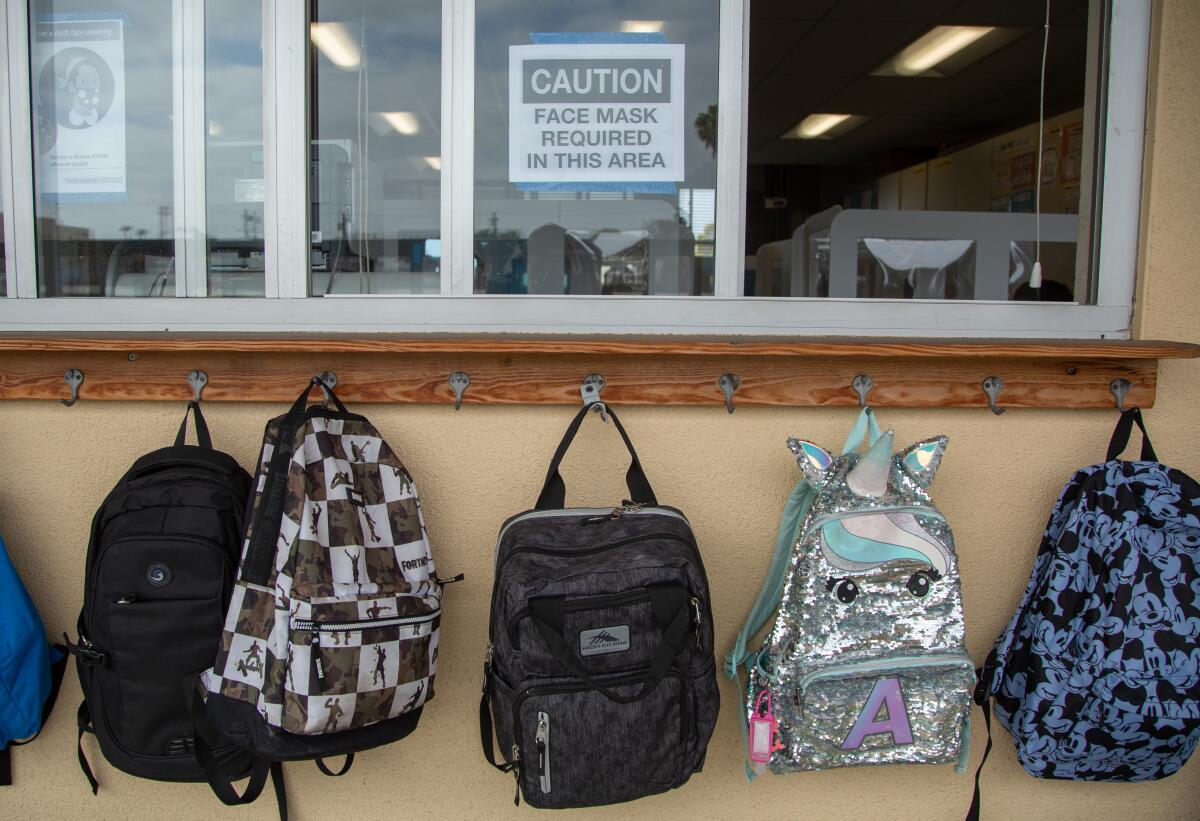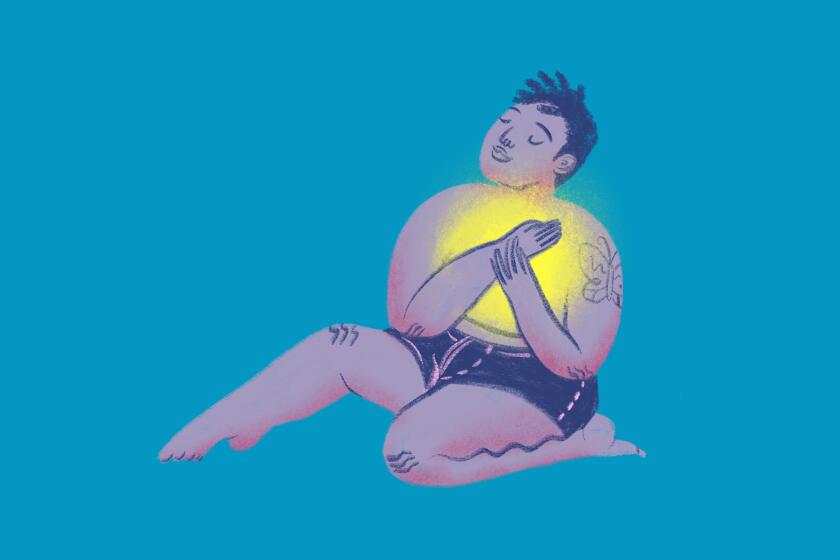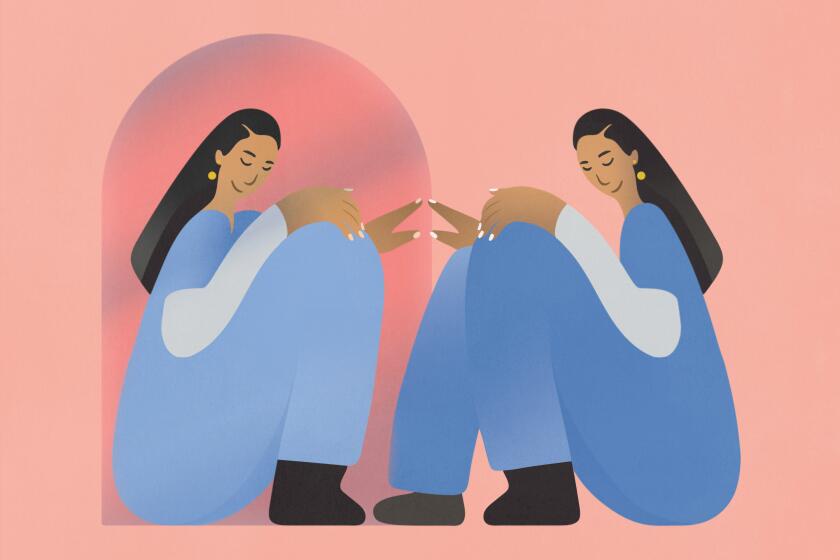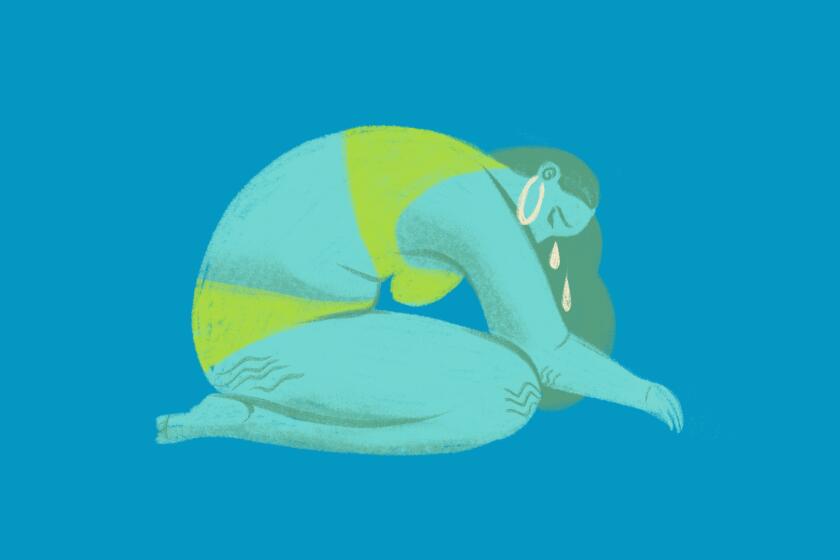Youth mental health crisis: What parents should watch for

- Share via
U.S. Surgeon General Vivek H. Murthy issued a public health advisory last week on what he called an alarming increase among young people reporting certain “mental health challenges,” a surge that was exacerbated by the pandemic.
Whitney Brammer, clinical psychologist for the division of adolescent and young adult medicine at Children’s Hospital Los Angeles, said it was reassuring to see the surgeon general’s warning to promote more awareness of this issue. “As a psychologist here at the Children’s Hospital,” Brammer said, “we’ve been seeing such a heightened need for behavioral health sufferers, especially with our teens and young adults.”
For the record:
2:59 p.m. Dec. 16, 2021A previous version of this article gave an incorrect phone number for the Trevor Project Lifeline. The correct number is (866) 488-7386. It also incorrectly stated that NAMI has a crisis text line for counseling, when in fact NAMI partners with Crisis Text Line to provide that service.
It’s important for parents, she said, to learn what warning signs to look for in their kids and how to reach out for additional support. Here are some suggestions offered by mental health experts.
Warning signs
David W. Bond, director of behavioral health for Blue Shield of California, cautioned parents against trying to diagnose their child by themselves or with the assistance of the internet. Nevertheless, some behavioral shifts can raise red flags that should prompt a parent to seek help.
Experts interviewed by The Times, including school social workers and counselors, listed a number of behavioral and emotional changes that, if sustained, could be a sign of a more serious problem:
- An increase in truancy, tardiness or resistance to going to school.
- A sharp change in focus or difficulty concentrating, a lack of motivation, or falling grades.
- Feeling anxious, sad or low all the time, or frequent mood swings.
- Withdrawing from friends.
- Indications of self-harm.
- Frequent nightmares and sleep disturbances, whether it be sleeping too much or not sleeping enough.
- Changes in eating habits.
- Sharp changes in social media habits.
- Peer conflict.
- Physical symptoms, including frequent headaches, stomach aches or body aches.
The COVID-19 pandemic has affected nearly everyone’s mental health. If you’re looking for help, here’s a list of resources
Alma Lopez, the school counselor coordinator at Livingston Unified School District and a counselor at Livingston Middle School, said the telltale signs in younger children tend to be changes in behavior, because they often can’t verbalize what they’re feeling yet. As kids age, she said, the emotional issues become more apparent.
When parents come to her for advice, she said, “I tell them, ‘You are the expert. You know your child.... If it doesn’t feel normal, let’s ask a few questions.”
Bond offered four questions to ask when trying to decipher whether a child is going through a typical adolescent issue or something more serious:
- When did it start?
- Was there an event or something that caused the change?
- What’s the frequency of the behavior?
- What’s the intensity of the behavior?
Bond said a child can feel stressed or sad from a breakup or a challenging test at school — that’s normal. But there may be a number of other forces layered on top of that, Bond said, including the pandemic, injustices, racial and cultural issues and LGBTQ-related stress.
It can be hard to discern between the normal and abnormal in a developing young person. But if a teen has intense feelings that last more than two weeks or has the intense feelings for most of a two-week period, that’s a sign of something more serious afoot.
When the conversation begins, Bond said, parents should stop talking and listen. Many parents make the mistake of asking questions that suggest the response the parent is looking for, he said — for example, “Are you struggling with depression?” or “Do you feel this way?” What parents should do is keep themselves open to whatever the child might have to say.
If you reach out to your teen and they brush off the subject or don’t want to talk about it, Bond said, try again at another time but don’t force the conversation. But he added, “Sometimes you’re not the right person for them to talk to, even though they’re your child and you might feel left out or even hurt.”
In that case, Bond said, a parent should find someone who has an influential presence in their teen’s life, such as an uncle or an adult at school or church.
“If your [teen] is having active thoughts of harming themselves or suicide, calmly dive into that right away,” Bond added. “We don’t want that to go on.”
Therapy is great — but it can be pricey. Here are some free or low-cost alternatives.
What help is available at your child’s school
Although the resources vary from district to district, parents looking for help can find it at their local school. Most campuses have at least one person with mental-health training — a counselor, a psychologist, a social worker or a nurse — and your child’s teacher can point you to the right person.
Los Angeles Unified School District has a student and family resource hotline at (213) 241-3840 that’s answered weekdays from 8 a.m. to 5 p.m. to help with mental health issues and other basic needs, such as housing and food insecurity. “It’s really meant to be a kind of one-stop shop to support the social-emotional and wellness aspects of a family,” said Joel Cisneros, the district’s head of mental health services. Operators will first assess how acute the problem is, Cisneros said, then connect the family to the appropriate resource, whether it be a mental health worker at the child’s school or, for more significant concerns, one of the 13 wellness centers the district helps operate.
In addition, Cisneros said, each school has a crisis team trained to address various mental health needs. The district has also been conducting workshops to teach parents and caregivers how to promote students’ social-emotion well-being.
A handful of schools have programs that monitor every student’s situation on a daily basis, which helps them identify potential emotional or behavioral problems at a very early stage, said Loretta Whitson, executive director of the California Assn. of School Counselors. But this is not common.
Typically, the responsibility falls on parents to bring problems to the school’s attention. “My advice to parents is, don’t be passive,” she said.
In addition to plugging the child into the programs the school provides, Lezya Weglarz, vice chair of the California Assn. of School Counselors, said counselors can connect families with services outside of school. “We’re happy to walk a family through the steps needed to get that support,” she said. “We help families navigate those conversations, even with a child’s pediatrician.”
Paul Brazzel, president of the California Assn. of School Social Workers, suggested that parents ask for a meeting at their child’s school. Typically, he said, schools will set up a “student success team” meeting for the parents (and the child, if developmentally appropriate) with teachers and the school social workers or counselor to discuss the child’s background and strengths, then build a plan to address the family’s concerns. “That’s a really nice place for families to start that process,” Brazzel said. It can document the issues, hold people accountable, and identify the resources available to help.
First generation trauma is an emerging term in the Latino community, with people talking about it on social media. Here’s how it affects children of immigrant parents.
Other resources
Many schools are short-staffed when it comes to mental health providers, so if you need more immediate assistance, you can also find help elsewhere.
Brammer said parents with insurance should check the back of their insurance card for a number to call for mental health services and referrals available to them. Another avenue to access care, she said, is reaching out to the Los Angeles County Department of Mental Health to learn about programs, Medi-Cal specific programs or local organizations.
Los Angeles County Department of Mental Health has a 24/7 helpline, (800) 854-7771, that serves as an entry point for mental health services with the department. Staff there can direct you to the access center (for referrals to a service provider or a mental health screening), an emotional support line (talk to a trained active listener), or a veterans line (for mental health support and connection to veterans programs).
Alma Family Services provides multilingual community-based services for families.
Wellnest, formerly known as Los Angeles Child Guidance Clinic, takes a family-driven and culturally respectful approach to providing behavioral healthcare and trauma-focused therapy.
United American Indian Involvement provides counseling and therapy services as well as a child abuse treatment program funded by the L.A. County Department of Mental Health.
Children’s Bureau assists at-risk children and their families with mental health services, prevention services and foster-care-related services.
Trevor Project Lifeline provides support to LGBTQ youths and allies in crisis or in need of a safe and judgement-free place to talk. Call (866) 488-7386.
The National Alliance on Mental Illness has a family guide on ways to offer support for a child with a mental health condition. It also has a guide for youth to identify warning signs for themselves, how to talk about what they’re experiencing, and tips for seeking help. NAMI sponsors local support groups through its state affiliates, and there are various locations in the Los Angeles area: Urban Los Angeles, Glendale, Greater Los Angeles County, Long Beach, South Bay, San Gabriel Valley, San Fernando Valley and Westside Los Angeles.
NAMI has partnered with Crisis Text Line to connect those in need of support with a trained crisis counselor to receive free, 24/7 crisis support via text message. To start services, text “NAMI” to 741-741. You can also call the NAMI helpline at (800) 950-6264 from 7 a.m. to 3 p.m. Monday through Friday.
The Substance Abuse and Mental Health Services Administration has a national helpline, (800) 662-4357, that’s free and confidential for people and families facing mental and substance abuse disorders.
The coronavirus pandemic, wintertime, the daily stressors of life — it all can take a toll on our mental health. Here are some resources to help you understand therapy, how to find a therapist and more.
More to Read
Sign up for Essential California
The most important California stories and recommendations in your inbox every morning.
You may occasionally receive promotional content from the Los Angeles Times.
















